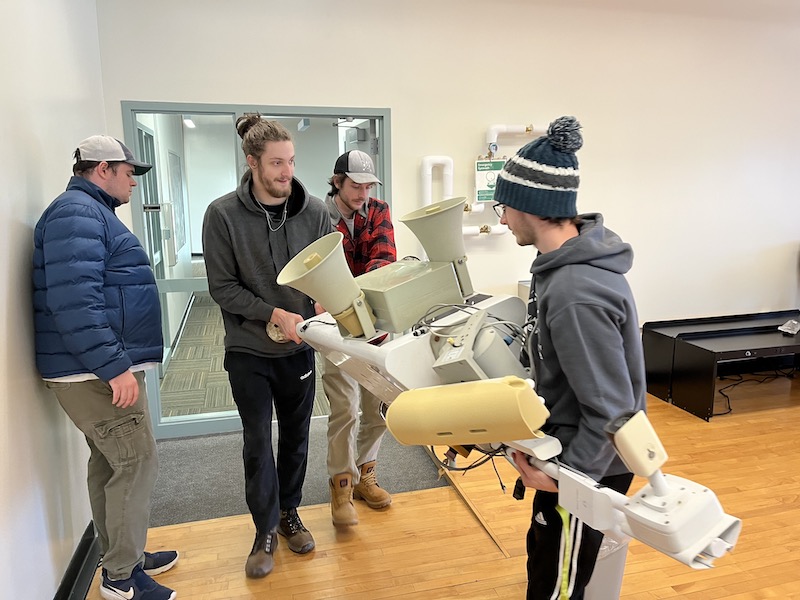Plymouth university students design and build ‘scarecrow’ robots to protect wildlife
Plymouth State University (PSU) students in their “Spring 2023 Industrial Robotics” course began work on a multi-semester project to bring new life to a pair of robots belonging to Casella Waste Systems, which has used six of these robots to ward off wildlife at their Bethlehem, New Hampshire landfill for roughly the past four years.
The project will continue during the next school year, providing a hands-on learning experience in a partnership that will benefit students, Casella, and ultimately regional wildlife.
The partnership between Plymouth State University’s first-in-the-state Robotics bachelor’s degree program and Casella was created in the hopes of bringing many of these robots, which use obsolete systems and have fallen into general disrepair, back into peak working order.
The solar-powered, stationary robots were originally used to detect the movement of wildlife, specifically birds, and to scare or agitate them into leaving vineyards. Since landfills have similar challenges, the robots are useful in that application as well.
Bret Kulakovich, an adjunct faculty member in robotics who oversees the makerspace and robotics lab in the Draper & Maynard building, says: “This project is about solving a real-world problem with significant impacts, but it is within the grasp of the students to figure out.

“This has been a fantastic learning experience in the spirit of PSU’s many programs advancing environmental sustainability.
“It’s also an example of PSU’s unique Cluster Learning Model, which emphasizes real-world experience and community partnerships. The students had a lot of fun with it.”
PSU’s new robotics lab was supported by a $1 million federal grant in 2022.
The students received the robots midway through the spring semester and immediately began their work by disassembling one of the robots to test each component and figure out what everything did.
Right away, the students faced interesting challenges; many of the parts were manufactured overseas between 2008 and 2010, wires were not labeled and operating system menus were in Chinese and French.
Kulakovich said the robots are equipped with cameras and motion sensors in a head that swivels 180 degrees, loudspeakers for emitting predator noises, propane-fueled air cannons for scaring large mammals and powerful lasers that create a strobing, dazzling effect.
Jake Reichenthal, PSU robotics major, says: “In a lot of ways, we have to approach this like detectives.
“There’s no instruction manual for these robots. We’ve had to figure out how translate other languages, scour the internet for obscure components and try to deduce what various ports on strange circuit boards are meant to do. But we are learning something new about it every day.”
In the fall 2023 semester, students who worked on the project in the spring will continue their work, and additional students will join in the project.
Kulakovich says: “Technology has come a long way in the last 10 years.
“We could program a robot today with the ability to distinguish between people and animals as well as different species of animal and to respond accordingly, perhaps with a predator call that is cherry-picked for the animal it detects.”
The ultimate goal is to present a solution for the six robots owned by Casella and equip the company to maintain them into the future.

